Astropolitics
Astropolitics (used interchangeably with Interstellar Geopolitics or just Geopolitics) examines how the interstellar geography of the Orion Arm influences nations and their interactions. It serves as a framework for analyzing foreign policy, using astrographical factors to interpret, explain, and anticipate political behavior on an interstellar scale. Heavily rooted in the concept of political power, this field of study provides a foundation for analyzing nations at the international level.
In the Cold War-dominated final years of the 23rd century, astropolitics is defined in near totality by the four-way struggle between the Orion Treaty Organization, Axis Powers, Communist Interstellar, and Co-Prosperity Sphere, with non-participant nations largely consolidated into the Non-Aligned Movement. These interstellar blocs are led by the United States, German Reich, Soviet Union, and Japan respectively, the four superpowers, and made up of lesser Great Powers, Regional Powers, Middle Powers, and Small Powers.
While nation-states remain the primary actors driving astropolitics, an increasing percentage of countries are now considered satellite states to varying degrees within the larger strategic competition. Proxy wars are widespread across the Orion Arm, rooted in local conflicts fueled and escalated by the interests of the superpowers or nations within their respective blocs. The increased interconnectivity across the Arm also enables actions taken by megacorporations, non-state entities, and sometimes even individuals to potentially shape astropolitics, igniting chains of events that can escalate far beyond their original scope.
As a consequence, the traditional state-centric order of the post-evacuation era is evolving. International organizations like the League of Nations, megacorporations, and non-state actors increasingly compete with nation-states for influence, a development often described as a form of new-medievalism. Many megacorporations, and some non-state actors, command greater resources than middle or small powers, further blurring the lines that once clearly defined interstellar politics.
Superpowers
See Also: Potential Superpowers
Superpower describes a sovereign state that holds a dominant position, characterized by the ability to exert influence and project power across the Orion Arm. They excel in every component of state power: demographic, economic, military, technological, political, and cultural strength, as well as diplomatic and soft power. Traditionally, superpowers are preeminent among the great powers. While other states are able to project power across the Orion Arm, the influence of the superpowers is so significant that no major action can be taken by the international community without first considering their positions.
| State Flag | Common and Formal Names | Membership Within the League of Nations | International Organization Membership | Legacy Nation | Further information on status and recognition of sovereignty |
|---|---|---|---|---|---|
 |
United States – United States of America |
|
Yes | ||
 |
Soviet Union – Union of Soviet Socialist Republics |
|
Yes |
| |
 |
German Reich – Greater German Reich |
|
Yes | ||
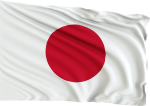 |
Japan – Empire of Japan |
|
|
Yes |
| Criteria For Inclusion: The methodology for classifying nations as Superpowers, as outlined in this document, combines established criteria with the Champlain Group's proprietary analysis, incorporating both historical and contemporary qualifications. These include; extensive astropolitical influence, significant military capabilities with interstellar operational reach, a robust and diversified economy, and advanced technological prowess. Strong diplomatic and cultural influence is also considered. In recognition of the paramount role that interstellar territories play modern power dynamics, the number of undisputed territorial claims on star systems is also considered.
Note: Supranational Unions are not considered superpowers under this framework. |
Great Powers
See Also: Potential Great Powers
Great power describes a sovereign state that maintains a major, sustained capacity to influence astropolitics and project power across multiple regions of the Orion Arm. Great powers possess broad capabilities across the core components of state power: demographic, economic, military, technological, political, and cultural, reinforced by effective diplomacy and soft power. Within their spheres of interest, great powers can easily shape outcomes, but generally require partners to coerce or deter a superpower. In the modern phase of the Cold War, they form the backbone of major alliances and act as principal balancers within the international system.
| State Flag | Common and Formal Names | Membership Within the League of Nations | International Organization Membership | Legacy Nation | Further information on status and recognition of sovereignty |
|---|---|---|---|---|---|
 |
East Africa – East African Federation |
|
Yes | ||
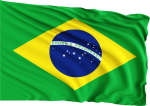 |
Brazil – Federative Republic of Brazil |
|
Yes | ||
 |
West Africa – Confederation of West African States |
|
Yes | ||
 |
France – French Republic |
|
Yes | ||
 |
Italy – Italian Social Republic |
|
Yes | ||
 |
China – Republic of China |
|
Yes |
| |
 |
India – Republic of India |
|
Yes | ||
 |
Intermarium – Międzymorze Commonwealth |
|
No |
| |
 |
Indonesia – Republic of Indonesia |
|
Yes | ||
 |
Pacific America - Pacific States of America |
|
Yes | ||
 |
Abyssinia – Imperial State of Ethiopia |
|
Yes | ||
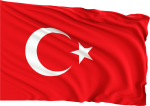 |
Türkiye – Republic of Türkiye |
|
Yes | ||
 |
Spain – Spanish State |
|
Yes | ||
 |
U.A.R. – United Arab Republic |
|
Yes | ||
 |
Alpha Centauri – United Centauri Republic |
|
No | ||
 |
Great Britain – United Kingdom |
|
Yes |
Regional Powers
See Also: Regional Alliances & Coalitions
Regional power describes a sovereign state whose influence and ability to project power are concentrated primarily within a specific region of the Orion Arm. Regional powers may not possess the full range of capabilities of great powers, but they maintain significant strength across major components of state power. Within their region, they can exercise coercive influence over neighbors, though their ability to act independently on the Arm-wide stage is limited. In the Cold War system, regional powers are often aligned with superpowers or great powers, though some have entered into independent coalitions. They serve as pivotal actors in local contests and as critical partners within larger alliances.
| State Flag | Common and Formal Names | Membership Within the League of Nations | International Organization Membership | Legacy Nation | Further information on status and recognition of sovereignty |
|---|---|---|---|---|---|
 |
Acadia – Federation of Acadia |
|
No | ||
 |
Argentina – Argentine Republic |
|
|
Yes | |
 |
Australasia – Commonwealth of Australasia |
|
Yes | ||
 |
Aurelia – Federation of Aurelia |
|
No | ||
 |
Bulgaria-Romania – Union of Bulgaria and Romania |
|
Yes |
| |
 |
Chari-Makasa – Solidarité of Chari-Makasa |
|
No | ||
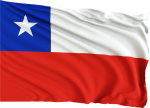 |
Chile – Republic of Chile |
|
Yes | ||
 |
Gran Colombia – Republic of Gran Colombia |
|
Yes | ||
 |
Cuba – People's Federation of Cuba |
|
Yes | ||
 |
Hungary – National Republic of Hungary |
|
Yes | ||
 |
Korea – Republic of Korea |
|
No | ||
 |
Manchuria – Empire of Great Manchuria |
|
Yes | ||
 |
Mexico – United Mexican States |
|
Yes | ||
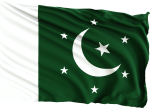 |
Pakistan – Islamic Federation of Pakistan |
|
Yes | ||
 |
The Philippines – Commonwealth of the Philippines |
|
Yes | ||
 |
Portugal – Portuguese National Federation |
|
Yes | ||
 |
Sirius – Sirius Federation |
|
No | ||
 |
Sweden – Kingdom of Sweden |
|
Yes | ||
 |
Tau Ceti – United Provinces of Tau Ceti |
|
No | ||
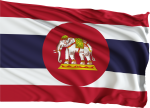 |
Thailand – Kingdom of Thailand |
|
Yes | ||
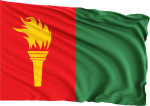 |
Republican Vega – Democratic Republic of Vega |
|
No | ||
 |
Federal Vega – Federal Union of Vega |
|
No | ||
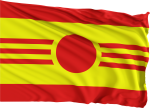 |
Vietnam – Empire of Vietnam |
|
Yes |
Middle Powers
Middle power describes a sovereign state with limited capacity to project power beyond its immediate region, yet sufficient resources and stability to exert meaningful influence in international affairs. Middle powers do not rival great or regional powers in comprehensive strength, but may maintain niche advantages such as economic specialization, diplomatic networks, or cultural influence that allow them to shape outcomes disproportionate to their size. They may provide valuable contributions to military, political, research, or economic coalitions, and frequently act as mediators in disputes between larger states. In the Cold War system, middle powers are essential secondary actors: too powerful to be ignored outright, yet unlikely to be decisive on their own.
| State Flag | Common and Formal Names | Membership Within the League of Nations | International Organization Membership | Legacy Nation | Further information on status and recognition of sovereignty |
|---|---|---|---|---|---|
 |
Appia – Appian Republic |
|
No | ||
 |
Andulela-Chelif – Republic of the Union of Andulela-Chelif |
|
No | ||
 |
Apollo – Apollo Federation |
|
No |
| |
 |
Artemis – Artemis Colonial Republic |
|
No |
| |
 |
Arcturus – Union of Arcturan Republics |
|
No | ||
 |
Castine – National Republic of Castine |
|
No | ||
 |
Callisto – Callisto Colonial Republic |
|
No |
| |
 |
Eridani – Eridani Republic |
|
No |
| |
 |
Finland – Republic of Finland |
|
Yes |
| |
 |
Ireland – Republic of Ireland |
|
Yes | ||
 |
Juno – United States of Juno |
|
No | ||
 |
Khalistan – Federation of Khalistan |
|
Yes | ||
 |
Kitiya – People's Republic of Kitiya |
|
No | ||
 |
Mongibello – Independent State of Mongibello |
|
No | ||
 |
New Canaan – Republic of New Canaan |
|
No | ||
 |
Norway – Kingdom of Norway |
|
Yes | ||
 |
Quebec – Republic of Quebec |
|
No | ||
 |
Senekane – Federation of Senekane |
|
No | ||
 |
Silvanus – Silvanus Colonial Republic |
|
No |
| |
 |
Tetus – Tetus People's Republic |
|
No |
| |
 |
Tianyuan – Tianyuan Republic |
|
No |
| |
 |
Vesta – Republic of Vesta |
|
No | ||
 |
Virngrund – State of Virngrund |
|
No |
| |
 |
Whitehall – High Republic of Whitehall |
|
No |
Small Powers
See Also: Shared Sovereignty
Small power describes a sovereign or semi-sovereign state with limited capacity to project power beyond its own borders and little influence in shaping events outside its immediate astrography. Small powers typically lack the comprehensive resources of larger states, but may retain modest strengths in specific areas such as commerce, technology, or cultural output. Their security and prosperity often depend on alignment with stronger powers, participation in international institutions, or integration into regional coalitions or systems. In the Cold War system, small powers are frequently the objects of competition between larger states, yet they can exercise agency by leveraging geography, alliances, or specialized capabilities to secure their interests.
| State Flag | Common and Formal Names | Membership Within the League of Nations | International Organization Membership | Legacy Nation | Further information on status and recognition of sovereignty |
|---|---|---|---|---|---|
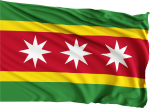 |
Banjuna-Mahara – Free State of Banjuna-Mahara |
|
No |
| |
 |
Boreale – Colonial Republic of Boreale |
|
No | ||
 |
Callao – Bolivarian Republic of Callao |
|
No | ||
 |
Callwood – Republic of Callwood | No | |||
 |
Grobnitsa – Independent Republic of Grobnitsa |
|
No | ||
 |
Heinlein – Heinlein Colonial Republic |
|
No | ||
 |
Holy See |
|
Yes | ||
 |
Kumasi – Kumasi Colonial Republic |
|
No |
| |
 |
Mdina – Mdina Colonial Republic |
|
No | ||
 |
Mediana – Mediana Colonial Republic |
|
No | ||
 |
Messis – Independent State of Messis |
|
No | ||
 |
Naxos – Colonial Republic of Naxos |
|
No |
| |
 |
Petrarca – Petrarca Colonial Republic |
|
No | ||
 |
Sailastra – Commonwealth of Sailastra |
|
No | ||
 |
Salamis – Salamis Colonial Republic |
|
No |
| |
 |
Thasos – Republic of Thasos |
|
No |
| |
 |
Val Verde – Colonial Republic of Val Verde |
|
No | ||
 |
Vesper – Republic of Vesper |
|
No |
Frontier Powers
See Also: Far Frontier, List of Far Frontier Systems By Population
Frontier power describes a sovereign or semi-sovereign state located on the outer reaches of the Orion Arm, beyond the established cores of interstellar civilization. They are typically isolated, with smaller populations, limited economic strength, and restricted capacity for interconnectivity. The influence of frontier powers rarely extends beyond their own boundaries, and they exert little to no impact on astropolitics within the Arm as a whole. In many cases, they are only partially sovereign, with authority shared, or contested, by corporate or other interests that can operate without meaningful oversight. Historically ignored by larger states and markets alike, frontier powers are beginning to draw attention as megacorporations seek unregulated opportunities. In the Cold War, they represent a new and growing theater of competition.
| State Flag | Common and Formal Names | Membership Within the League of Nations | International Organization Membership | Legacy Nation | Further information on status and recognition of sovereignty |
|---|---|---|---|---|---|
 |
Arrowhead – Arrowhead Colonial Administration | No | |||
 |
Ash Point – Ash Point Colonial Administration | No | |||
 |
Blakeburn – Blakeburn Colonial Union | No | |||
 |
Glasswall – Colonial Republic of Glasswall | No | |||
 |
Kovach – Commonwealth of Kovach | No | |||
 |
Reunion – Reunion Colonial Republic | No | |||
 |
Three Saints – Three Saints Colonial Administration | No | |||
 |
Vorma-St. Monica – Colonial Union of Vorma-St. Monica | No |